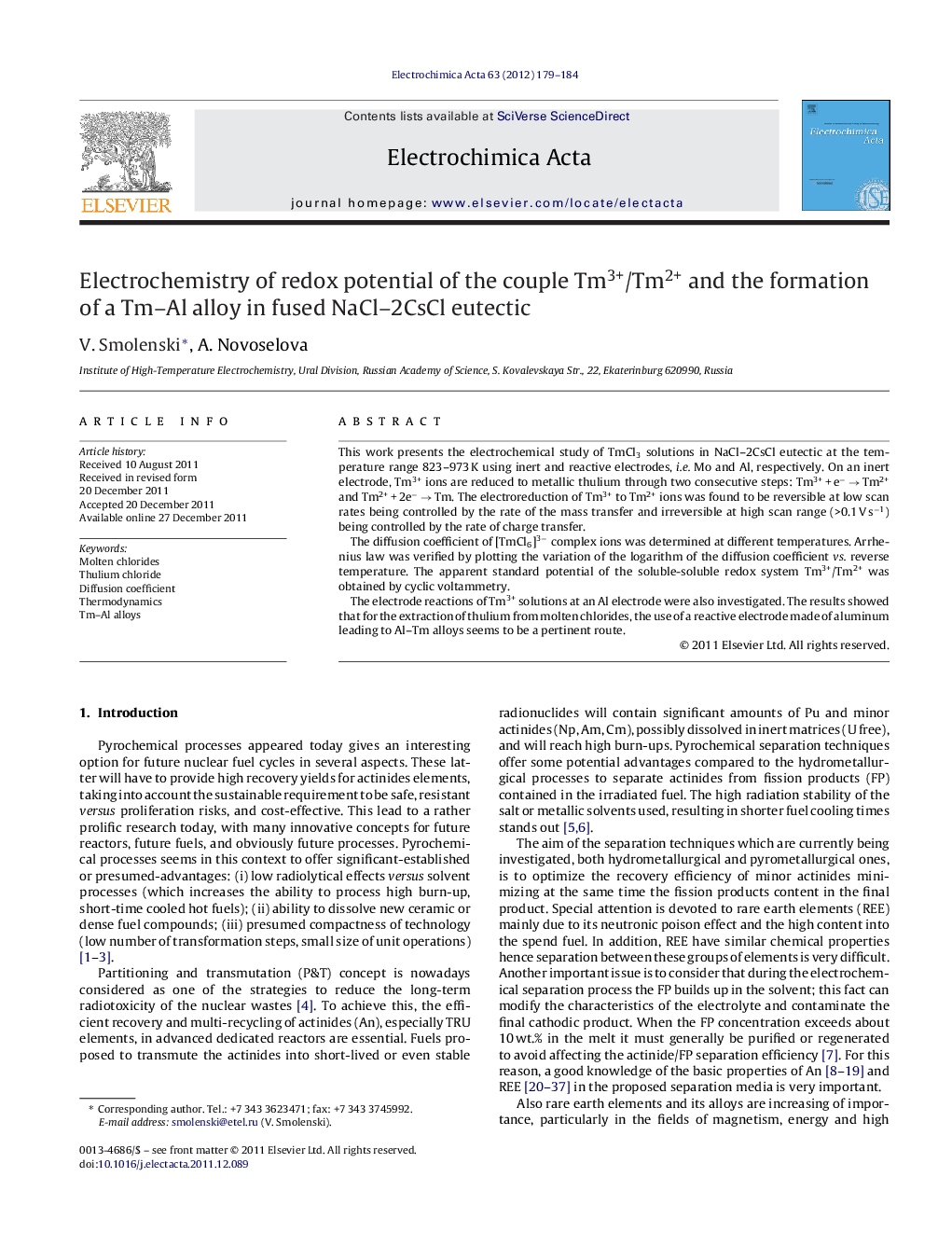| Article ID | Journal | Published Year | Pages | File Type |
|---|---|---|---|---|
| 189138 | Electrochimica Acta | 2012 | 6 Pages |
This work presents the electrochemical study of TmCl3 solutions in NaCl–2CsCl eutectic at the temperature range 823–973 K using inert and reactive electrodes, i.e. Mo and Al, respectively. On an inert electrode, Tm3+ ions are reduced to metallic thulium through two consecutive steps: Tm3+ + e− → Tm2+ and Tm2+ + 2e− → Tm. The electroreduction of Tm3+ to Tm2+ ions was found to be reversible at low scan rates being controlled by the rate of the mass transfer and irreversible at high scan range (>0.1 V s−1) being controlled by the rate of charge transfer.The diffusion coefficient of [TmCl6]3− complex ions was determined at different temperatures. Arrhenius law was verified by plotting the variation of the logarithm of the diffusion coefficient vs. reverse temperature. The apparent standard potential of the soluble-soluble redox system Tm3+/Tm2+ was obtained by cyclic voltammetry.The electrode reactions of Tm3+ solutions at an Al electrode were also investigated. The results showed that for the extraction of thulium from molten chlorides, the use of a reactive electrode made of aluminum leading to Al–Tm alloys seems to be a pertinent route.
► The electrochemical study of TmCl3 solutions in NaCl–2CsCl eutectic at 823–973 K. ► The reaction of Tm3+ ions up to metal on inert and active electrodes. ► The use of a reactive electrode made of aluminum leading to Al–Tm alloys seems to be a pertinent route. ► The calculation of the kinetic and thermodynamic properties.
